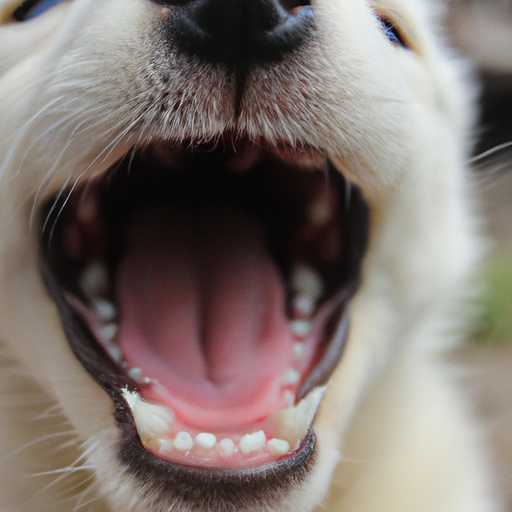Have you ever wondered what your adorable little puppy’s teeth look like? Understanding the structure and development of your pup’s teeth can help you provide better care and address any potential dental problems. Here’s a detailed guide to help you understand what puppy teeth look like.
Understanding the Puppy Dentition
Like humans, dogs have two sets of teeth during their lifetime – baby teeth (also known as deciduous teeth) and adult teeth. Puppies are born toothless but soon sprout a set of 28 baby teeth.
- Incisors: These are the small teeth at the front of the mouth, used for nibbling and grooming. Puppies have six incisors on both the top and bottom jaw.
- Canines: These are the pointed, fang-like teeth on either side of the incisors. Puppies have two canines on both the top and bottom jaw.
- Premolars: These are the larger teeth towards the back of the mouth used for chewing. Puppies have six premolars – three on each side of both the top and bottom jaw.
Here is a simplified table showing the number of each type of puppy tooth:
| Teeth Type | Count |
|---|---|
| Incisors | 12 |
| Canines | 4 |
| Premolars | 6 |
| Total | 28 |
Appearance of Puppy Teeth
Puppy teeth are sharp and needle-like, often referred to as “milk teeth. They are smaller, more delicate, and whiter than adult dog teeth. The incisors are tiny, thin, and razor-sharp, while the canines are elongated and pointed. The premolars, although not as sharp as the incisors and canines, are still quite pointed.
Teething Timeline
Understanding your puppy’s teething timeline can help you provide timely and appropriate care. Here’s a brief overview:
- Birth to 2 weeks: Puppies are born without teeth.
- 2 to 4 weeks: The incisors and canines start to emerge.
- 4 to 6 weeks: The premolars appear, completing the set of baby teeth.
- 3 to 6 months: The baby teeth begin to fall out, replaced by adult teeth.
Signs of Teething
As your puppy teethes, you might notice some signs, such as drooling, chewing, and a slight change in eating habits. Some puppies may also exhibit signs of discomfort or restlessness. Providing chew toys and frozen treats can help alleviate these symptoms.
Dental Care for Puppies
Dental care is crucial from a young age to ensure your puppy has a healthy mouth. Here’s what you can do:
- Begin brushing your puppy’s teeth as soon as the baby teeth fully emerge.
- Use a toothbrush and toothpaste designed for dogs.
- Offer dental chews and toys to help clean your puppy’s teeth.
- Regularly check your puppy’s mouth for any signs of dental problems.
Common Dental Problems in Puppies
Puppies can encounter various dental problems, including retained baby teeth, gum disease, and tooth fractures. If you notice any changes in your puppy’s mouth or eating habits, it’s best to consult a vet.
When to Visit the Vet
While teething is a normal process, certain issues may warrant a vet visit. If your puppy shows signs of severe discomfort, has a significant change in eating habits, or if you notice bleeding gums or retained baby teeth, it’s time to consult a vet.
Frequently Asked Questions
Q: When do puppies start getting teeth?
A: Puppies start getting their baby teeth around 2 to 4 weeks of age.
Q: Do puppies lose their baby teeth?
A: Yes, puppies lose their baby teeth typically around 3 to 6 months of age as their adult teeth start to come in.
Q: How can I help my teething puppy?
A: Providing chew toys and frozen treats can help alleviate teething discomfort. Regular dental care is also crucial.
Understanding your puppy’s dental development and care can help ensure they grow into a healthy adult dog with a strong and healthy mouth. Remember, a happy dog is a healthy dog, and that starts with their teeth!



